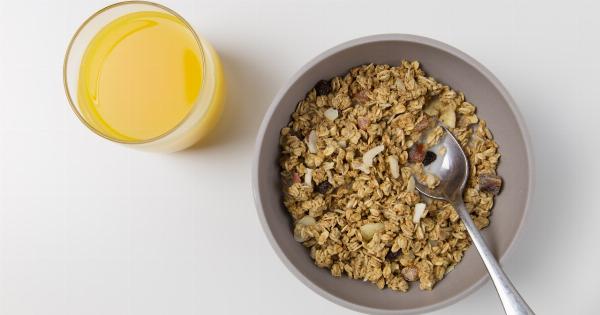Introducing solid foods to your baby can be an exciting but daunting experience for parents. It is a big milestone in a baby’s life and sets the foundation for healthy eating habits.
However, it is important to ensure that the foods introduced are nutritious and appropriate for your baby’s developmental stage. Here are some healthy options for introducing solid foods to your baby:.
1. Single-Ingredient Purées
Single-ingredient purées are a great way to introduce your baby to solid foods. Start with simple flavours such as sweet potato, carrot, or avocado. You can also try fruits such as bananas or pears.
Ensure the purées are smooth and thin in consistency to make it easy for your baby to swallow.
2. Iron-Rich Foods
Babies need iron for their brain development, and starting at 6 months, breast milk or formula may not be enough. Iron-rich foods such as iron-fortified cereals, pureed meats, and pureed beans are great options.
It is important to mix the iron-rich foods with a vitamin-C-rich food, such as pureed fruits or vegetables to increase iron absorption.
3. Soft Fruits and Vegetables
Soft fruits and vegetables such as ripe bananas, steamed sweet potatoes, cooked broccoli, and mashed peas are great options to introduce texture and flavour to your baby’s diet.
Ensure the fruits and vegetables are soft and cooked until they are easy to squish between your fingers.
4. Strained Yogurt and Cottage Cheese
Strained yogurt and cottage cheese are great sources of protein and calcium. However, it is important to choose plain and unsweetened options as many flavoured yogurts and cottage cheeses have added sugars.
Ensure the texture is smooth and thin in consistency.
5. Soft Cooked Meats
If you choose to introduce meat to your baby, soft cooked meats such as ground beef, chicken, or turkey are great options. Ensure the meats are pureed or finely minced and mixed with iron-rich foods and other pureed fruits and vegetables.
6. Baby Oatmeal
Baby oatmeal is another great option to introduce your baby to solid foods. It is a good source of iron and is easy to digest. Mix the oats with breast milk or formula to thin the consistency and make it easier for your baby to swallow.
7. Teething Biscuits
When your baby is ready for finger foods, teething biscuits are a great option to introduce. Ensure the biscuits are low in sugar and salt, and always supervise your baby during feeding to prevent choking.
8. Organic and Non-GMO Options
Ensure that the foods you give your baby are organic and non-GMO whenever possible. Organic foods are free of pesticides, hormones, and antibiotics, and non-GMO foods are free of genetically modified organisms.
9. Offer a Variety of Foods
Offer your baby a variety of foods to expose them to different textures and flavours. This will also ensure they receive a wide range of nutrients.
However, always introduce one food at a time and wait a couple of days before introducing a new food to monitor for any allergic reactions.
10. Gradually Increase the Texture
As your baby gets older and more experienced with solid foods, gradually increase the texture of the foods. This will help them learn how to chew and swallow different textures and prepare them for table foods later on.




























